Despite all the traditional leading indicators warning of recession for some time now, the US economy seems “robust” with unemployment stubbornly making new lows.
We touched on the suspected reasons for this in our public note “The Delayed Recession” which offers the most plausible reasoning for this. However, if we dig a little deeper under the hood, the goldilocks situation may be coming to an end.
1. The Global Economy
The U.S economy is no island, with a substantial portion of earnings of stocks in the SP500 coming from abroad. It makes sense then to keep an eagle-eye on the global economy. One of our favored methods to do this, taken from our comprehensive monthly Global Economic Report, is the percentage of countries posting positive annual real-GDP growth:
From the above chart, we can conclude that it’s highly likely the global economy is currently in contraction.
Another way to look at this is to examine global economic activity as the aggregate of imports and exports (total trade volumes):
INCREDIBLE OFFER : Get 50% discount off our annual PRO Subscription, PLUS order before 15 December and get a second year completely FREE. Get your discount HERE
We observe that trade volume peaked exactly one year ago and has been on a steady decline since.
2. The Local Economy
The U.S Labor market has been the “last man standing” among the indicators used to warn of U.S recession, with national unemployment figures stubbornly low and even declining. However, unemployment has ticked up 0.5% from its lows, right on the threshold normally used to trigger a recession warning:
Despite its popularity to measure the labor market, unemployment is largely a coincidentt-to-occasionally-lagging indicator. One of the ways to overcome this is to examine the unemployment rate individually in all 50 U.S states. We have four measures to implement this and NONE of them look promising for the near future of the national unemployment rate:
The reason these unemployment “breadth” metrics work so well is that the US labor market is characterized by large concentrations of labor pools in a few economically powerful & populous states. Since every state counts as a full vote no matter how large or small in these metrics, those larger-in-number, smaller states that are more economically sensitive (or less economically robust) start throwing out early warnings when the economy becomes iffy – something that is masked by the national unemployment aggregate.
Another method to assess the state of the labor market is to focus on cyclically sensitive components of the labor market – those items that are known to have outsized reactions/sensitivity to weaker economic conditions. The traditional candidates of several manufacturing employment metrics such as weekly and overtime hours, hires and job openings together with national part-time employment, initial claims & temporary help services come to mind. As part of our comprehensive US Labor report we combine these together into a single composite as depicted below:
It is interesting to note that this leading indicator has been in contraction territory for 14 months now – identical to the warning it gave before the “Covid Recession” in 2020. Using the average lead times to US Recession and their standard deviations (albeit on a small sample) this suggests a Recession started between May and Sept 2023.
There is a meaningful correlation between the leading index and the unemployment rate. But rather than judging it by eye from the chart we have constructed a probability model that looks at the leading index and the co-movement of its sub-components, to assess the likelihood of a sustained rise in unemployment:
Interesting times indeed with all-eyes on the next set of BLS labor data…
INCREDIBLE OFFER : Get 50% discount off our annual PRO Subscription, PLUS order before 15 December and get a second year completely FREE. Get your discount HERE

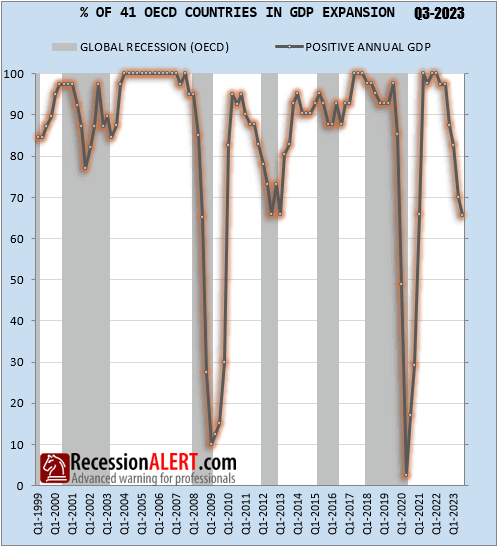
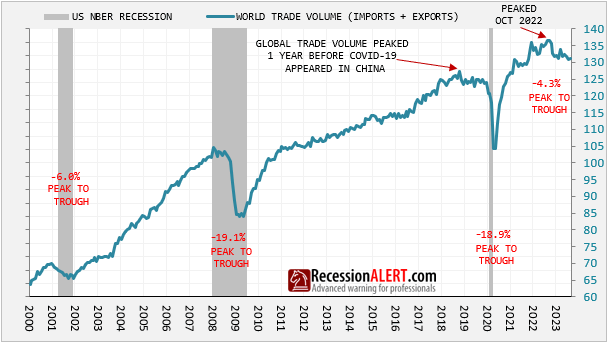
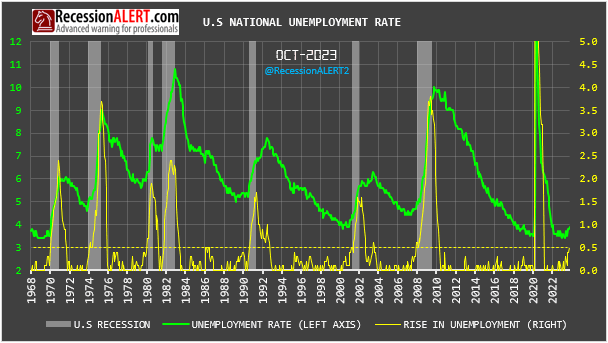
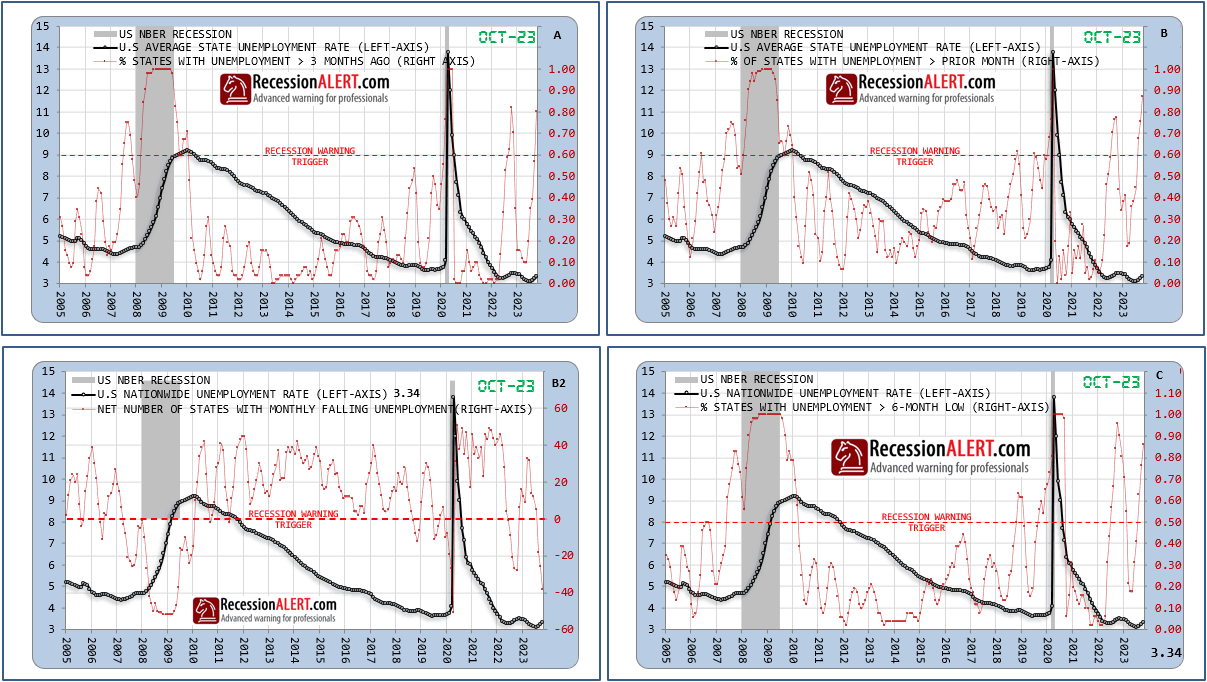
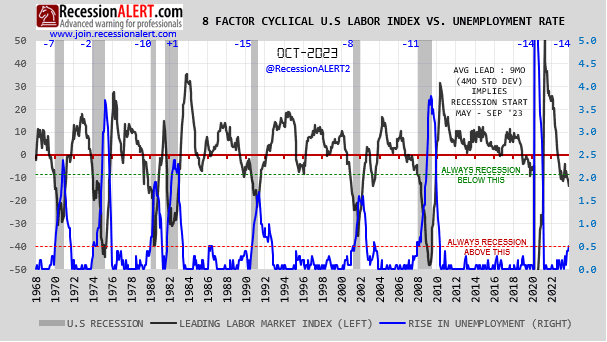
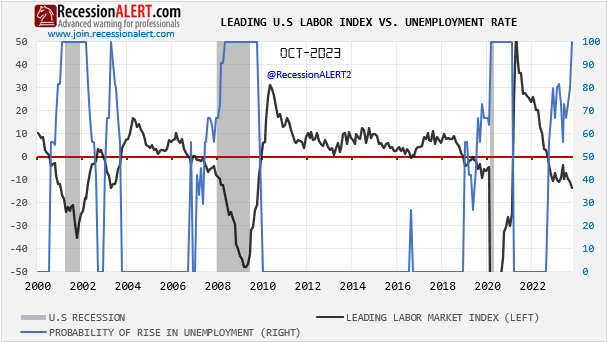
Comments are closed.